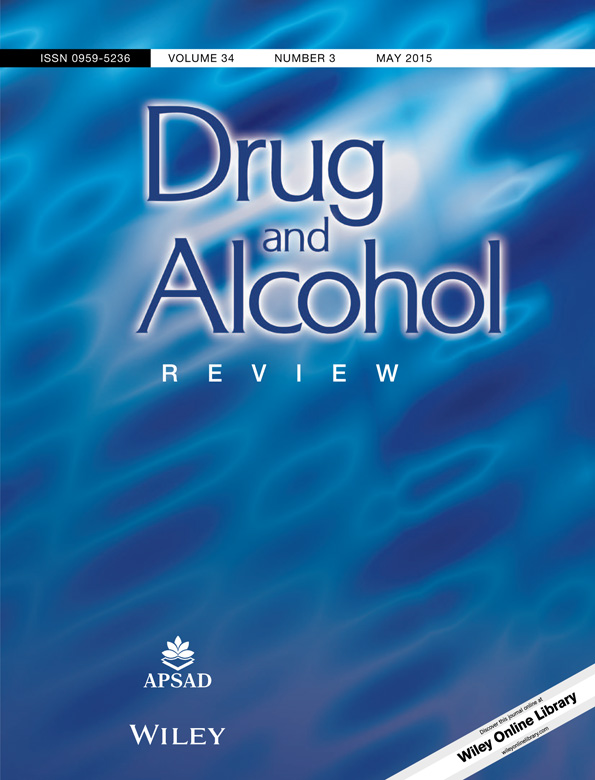Hypomagnesaemia and its potential impact on thiamine utilisation in patients with alcohol misuse at the Alice Springs Hospital
Abstract
Introduction and Aims
Alcohol rapidly reduces thiamine among alcohol-dependent individuals. Poor diet and alcohol's impact on absorption, storage, activation and excretion of thiamine are thought to be the mechanisms. Previous literature identifies magnesium as an important cofactor in thiamine utilisation, which might also be compromised in alcohol dependent patients. The aim was to describe the thiamine status and clinical profile for a sample of heavy alcohol users entering the Alice Springs Hospital in the Northern Territory of Australia and to examine the relationship between thiamine deficiency, magnesium deficiency and cognitive functioning.
Design and Methods
Cross-sectional study examining thiamine pyrophosphate (TPP) and magnesium concentrations for a sample of 62 males and 43 females (N = 105; n = 88 Aboriginal, n = 13 non-Indigenous). Cognition was assessed using the Rowland Universal Dementia Assessment Scale.
Results
TPP concentrations were within or above the reference range. Aboriginal patients had significantly lower TPP than non-Indigenous patients. A marginally significant difference was found between individuals with thiamine supplementation recorded within the previous 20 days compared with those without. Mean serum magnesium was in the low normal range with magnesium deficiency (i.e. <0.80 mmol L−1) present in 48% of those tested. Serum magnesium (but not TPP) concentrations correlated positively with cognitive test scores.
Discussion and Conclusions
Despite increased exposure to risk factors for Wernicke Korsakoff Syndrome, no patient had TPP concentrations below the reference range. High patient readmission and aggressive thiamine treatment policies may explain this finding. However, low magnesium may be prevalent and could contribute to impaired thiamine utilisation. [Dingwall KM, Delima JF, Gent D, Batey RG. Hypomagnesaemia and its potential impact on thiamine utilisation in patients with alcohol misuse at the Alice Springs Hospital. Drug Alcohol Rev 2015]




